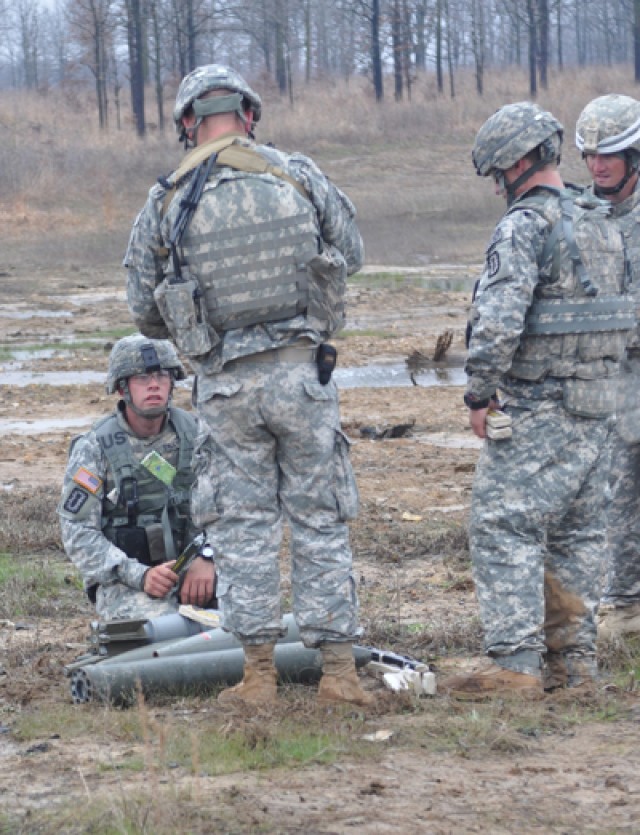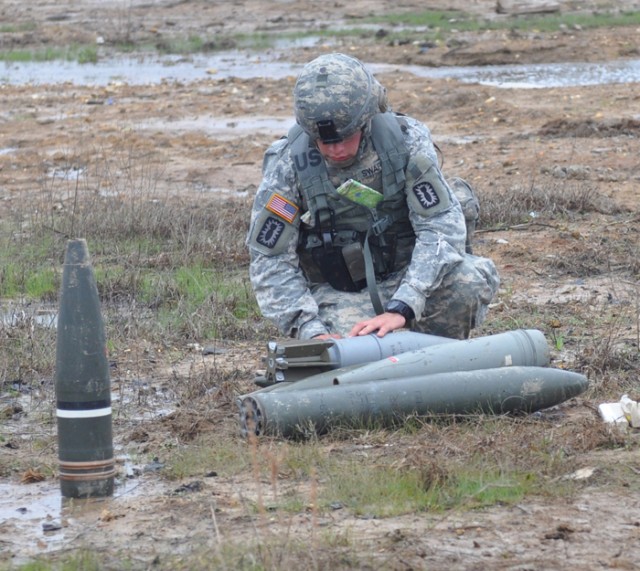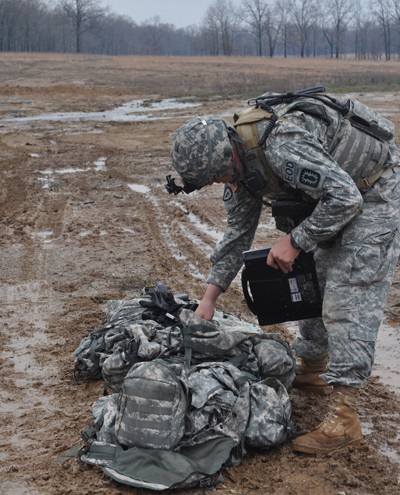FORT BENNING, Ga. - The Army's best bomb-disposal unit calls Fort Benning home.
The 789th Explosive Ordnance Disposal Company outperformed detachments from Fort Stewart, Ga., and Fort Bragg, N.C., to capture first place in a competition March 28-30 at Fort Campbell, Ky. Because of the high operations tempo since 9/11, it marked the first Explosive Ordnance Disposal Team of the Year event since 2001.
Three teams of three Soldiers each clashed in the three-day battle, designed to measure their proficiency in diffusing improvised explosive devices, suicide vests and booby traps. All are assigned to Fort Campbell's 52nd Ordnance Group, which has units spread across the United States.
"We're very excited about winning it for the unit," said Sgt. James Swartz, who headed the 789th EOD contingent. "We trained hard for it. I think the other two teams did well, too. ... We worked pretty good as a team, and everything worked out for us."
He was joined by Sgt. Bo Lollar and Spc. David Mensink.
"We are extremely proud of them," said Capt. Ethan Caldwell, the company commander. "They worked very hard to prepare themselves mentally. We were not the best-prepared team as far as equipment goes, but they had the heart and drive and determination to take it home. They didn't quit. That made all the difference."
Swartz said the teams faced up to seven tasks a day.
Among major tests, the Soldiers completed a nine-mile rucksack march and then had to untangle and dispose of a munitions cache in a muddy field - all while being timed. Prior to the event, the teams were told about a U.S. Soldier who'd been "captured" in the area. He was discovered in a building strapped with a suicide vest, which the teams had to remove without detonating.
In another scenario, competitors faced a dismounted mission at night to identify and safely get rid of a weapons stockpile rigged with IEDs and booby traps.
Swartz said the competition was intense and weather also played a factor, as conditions were mostly cold and rainy at Fort Campbell.
"It was pretty tough physically just running constantly for three days," he said. "We saw a wide range of IED problems, from roadside bombs to ordnance to weapons caches. ... It rained most of the time, then got pretty cold. But after you're out there for a couple days, you just deal with it and get through it."
The IEDs used in the event were training aids, but the teams employed real explosives to blow up the mock ordnance.
"It was very realistic - they had it set up just like a (forward operating base) in Afghanistan or Iraq," he said. "Everything was based off stuff that's been seen in combat."
Swartz has deployed twice to Iraq; he's one of only about 1,800 Soldiers in EOD units around the Army. He said very few people can even comprehend what it's like to stare at a real bomb on the battlefield.
"We get stuck with a lot of responsibility," he said. "Everything just goes back to your training. You've got other team members. Between three people, you can usually make a smart decision on what to do.
"You just try to stay calm and dispose of it safely. If you lose your cool, that's going to be infectious around you, and doesn't help anything."
Caldwell said it takes a special brand of Soldier to handle the pressure and extreme nature of the job.
"They need to be able to think on their feet, and not quit," he said. "What makes a good bomb technician is their attention to detail, their physical stamina and mental acuity. They are the prerequisites for getting through EOD School, and it's what makes the best techs."
"








Social Sharing